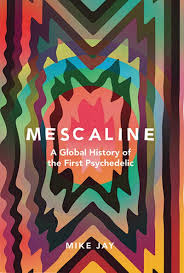Emily Witt at the LRB:
 In the early 20th century, peyote and mescaline were embraced by mystics, who saw them as a way to stave off the alienation of modernity and what Jay calls ‘the loss of the sacred’ and ‘the tyranny of reason’. Aleister Crowley used peyote in his séances. Frederick Madison Smith, the grandson of Joseph Smith, the founder of the Mormon religion, explored it as a possible means of achieving religious ecstasy. Smith also lobbied against the prohibition of the peyote religion, which had grown since the 1890s and was now attracting opposition. After a bill to prohibit peyote was narrowly voted down in the Senate, representatives of the Cheyenne, Oto, Ponca, Comanche, Kiowa and Apache tribes gathered to sign the charter of incorporation of the Native American Church in 1918, which they hoped would give the peyote religion First Amendment protections. Despite repeated attempts at state and federal prosecution in the decades that followed, the church successfully defended itself until a Supreme Court case in the 1990s rescinded its rights. A backlash to the court’s decision resulted in the 1994 amendment to the American Indian Religious Freedom Act, which protects the church’s right to peyote in federal law, though attempts at local bans have continued.
In the early 20th century, peyote and mescaline were embraced by mystics, who saw them as a way to stave off the alienation of modernity and what Jay calls ‘the loss of the sacred’ and ‘the tyranny of reason’. Aleister Crowley used peyote in his séances. Frederick Madison Smith, the grandson of Joseph Smith, the founder of the Mormon religion, explored it as a possible means of achieving religious ecstasy. Smith also lobbied against the prohibition of the peyote religion, which had grown since the 1890s and was now attracting opposition. After a bill to prohibit peyote was narrowly voted down in the Senate, representatives of the Cheyenne, Oto, Ponca, Comanche, Kiowa and Apache tribes gathered to sign the charter of incorporation of the Native American Church in 1918, which they hoped would give the peyote religion First Amendment protections. Despite repeated attempts at state and federal prosecution in the decades that followed, the church successfully defended itself until a Supreme Court case in the 1990s rescinded its rights. A backlash to the court’s decision resulted in the 1994 amendment to the American Indian Religious Freedom Act, which protects the church’s right to peyote in federal law, though attempts at local bans have continued.
more here.
